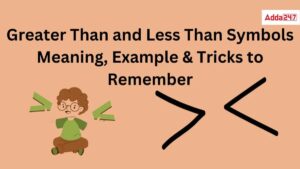Divisibility rules are quick ways to figure out if a number can be divided by another number without having to actually do the division. These guidelines can be particularly beneficial in mental arithmetic and finding solutions to problems. The divisibility rule of 13 is very important to know as it is the most frequently asked concepts in the competitive exams. In this article, we will discuss about the divisibility rule of 13 in detail along with examples.
Divisibility Rule of 13
The divisibility rule of 13 is the process by which one can computer whether the given number can be divided completely by 13 or not without going through long calculation. There is not a single rule for divisibility by 13, rather there are a set of rules to know the divisibility of number 13. The divisibility rule for 13 has come into the light to solve large numbers of division problems easily.
Divisibility Test of 13
According to the one of the divisibility rules for 13, a number can be evenly divided by 13 if the product of the digit in the ones place and 4, when added to the remaining digits, equals either 0 or a multiple of 13. Simply put, the result of adding the product of the units digit multiplied by 4 to the rest of the number must be either 0 or a multiple of 13.
Various Divisibility Rules for 13
As stated above, there are multiple divisibility rules for 13. There are essentially 4 different kinds of rules for determining divisibility by 13. Review the rules for determining if a number is divisible by 13, along with the examples provided.
Rule 1 for Divisibility of a number by 13
Given a number N, multiply the last digit of N by 4 and add it to the remaining truncated part of the number. If the result is a multiple of 13, then the number N is also a multiple of 13. Continue the procedure until it’s time to determine if the number is a multiple of 13. This technique is appropriate for verifying the divisibility of large numbers by 13. Go through the example given below to understand this.
Example: Find if 650 is divisible by 13
On applying the above mentioned rule,
650 = 65 + (0 × 4) = 65 and number 65 is divisible by 13 and gives the divisor as 5.
Therefore, the number 650 is also divisible by 13.
Second Divisibility Rule of 13
The second rule states that, multiply the unit digit of the given number by 9. Then, subtract the multiplied result from the remaining number value without the unit digit. If the result of this subtraction is divisible by 13, then the whole number must be divisible by 13.
Example: Let a number be 858. Find whether it is divisible by 13.
Using the second rule, we get
858 = 85 – (8 x 9) = 85 – 72 = 13
as the result is 13, which is divided by 13, so the number 858 will be divisible by 13.
Rule Number 3 for Divisibility by 13
If a number N is given to you, create alternating sums of groups of three numbers starting from the right and moving left. Let the digits in the number be n1n2n3n4n5n6n7n8n9. If a number formed by alternating addition and subtraction of blocks of 3-3 digits from right to left is divisible by 13, then the original number N is also divisible by 13.
That is, if (n7n8n9) – (n4n5n6) + (n1n2n3) is a multiple of 13, then the whole number will be divided by 13. One must subtract before adding in this case. Look at the example provided for clarification.
Example: Is 2,453,674 divisible by 13
By applying the above rule on the given number,
674 – 453 + 2 = 223
As 223 is not divisible by 13, hence the number 2,453,674 will also be not divisible by 13.
Divisibility by 13 Rule 4
To determine if a number N is divisible by 13, subtract the last 2 digits of N from 4 times the remaining digits of N. If the result is 0 or a multiple of 13, then the whole number will be divisible by 13. Nonetheless, it is the most precise approach when the provided number consists of three digits. Test this rule on the following examples.
Example: Check whether number 728 is divisible by 13 or not.
Using the rule number 4, we get
28 – (4 x 7) = 28 – 28 = 0
As the result is 0, hence the number 728 is divisible by 13










 Greater Than and Less Than, Equal to Sig...
Greater Than and Less Than, Equal to Sig...
 XXV Number- XXV Roman Numerals Definitio...
XXV Number- XXV Roman Numerals Definitio...
 Ordinal Numbers: Meaning, Examples, Appl...
Ordinal Numbers: Meaning, Examples, Appl...














